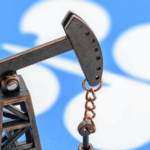[[{“value”:”
The cartel needs to be more honest about the implications of its drive to keep crude prices high.
The best scandals are those that start when someone, somewhere, decides to say something utterly shocking: the truth! A senior official of the OPEC+ oil cartel has said publicly what many thought privately — the group has been keeping oil prices too high, effectively subsidizing its rivals. The result? It cannot increase production and instead relies on ever-increasing output cuts.
Afshin Javan, the No. 2 official in the Iranian delegation to OPEC+, published a commentary on his country’s state-run news agency Shana on Nov. 26. The group, he argued, faced a “a supply glut” largely of its own making following several years of production cuts. “This strategy in support of prices has effectively encouraged higher supply outside the group, particularly on the part of the US,” he said. “That would leave a limited room for maneuvering by OPEC+ to ease its restrictions.”
The commentary went on to state a truth that few will even discuss behind closed doors: The current policy prompted Angola to quit OPEC+, and others could soon follow. Javan warned that Gabon, Equatorial Guinea and Republic of Congo “are likely to reconsider their membership.”
Within hours, the op-ed was deleted without explanation. But the damage, in the run-up to the cartel’s next meeting, was done. The commentary echoes the child in Hans Christian Andersen’s fable The Emperor’s New Clothes, who proclaims “but he hasn’t got anything on!” Yup; the king is in the altogether.
OPEC+ has now delayed a gathering scheduled for Dec. 1 until Dec. 5, as Saudi Arabia tries to concoct a plan to keep oil prices higher. Back in June, the group announced a deal to increase production from September 2024 and throughout 2025 in monthly instalments. But weak oil prices had forced OPEC+ to delay the increases already twice, first from September to October, and then from October to January.
The postponement allows the group extra time to decide what comes next. Riyadh isn’t ready to admit defeat. At a minimum, Saudi Arabia is pushing to delay the output increases a third time, by somewhere between three and six months, delegates tell me. The kingdom has also discussed the possibility of extra output cuts, but has so far found zero appetite among the members for that proposal.
In the meantime, Riyadh is trying to arm-twist Iraq and Kazakhstan into respecting their OPEC+ production limits. Both nations have regularly pumped above their quotas, along with Russia and the United Arab Emirates. Kazakhstan, which has spent billions expanding its largest oilfield, is protesting so that the group recognizes its right to produce more oil next year. That battle has the potential to derail any deal on Dec. 5, delegates tell me.
Ultimately, however, the Iranians are right: OPEC+ is subsidizing the growth of its rivals, and the longer it persists the more difficult it will be to find an exit strategy. Sure, President-elect Donald Trump may create an offramp for the Saudis if he’s able to curb Iranian and Venezuelan oil exports. But that’s hardly a sign of policy success for OPEC+; on the contrary, it would show that the cartel is at the mercy of the White House.
Year-to-date, Brent crude has averaged about $80.5 a barrel. Prices have only been low enough since September to inflict some pain on US producers. Still, oil prices of $70 to $75 a barrel aren’t enough to stop the American shale industry. One key reason is efficiency; another is that $70 a barrel is quite good from an historical point of view. It’s worth remembering that Brent averaged $63 a barrel in the 2017-2019 period, when US producers added roughly six million barrels a day in extra crude and other liquids output.
The International Energy Agency estimates the US shale industry is so good at drilling, and does it so cheaply, that today just 300 rigs do the job that took 500 rigs five years ago. Travis D. Stice, the chief executive officer of top shale producer Diamondback Energy Inc., recently told investors that he initially planned to use 22 to 24 rigs next year, but thought he could do the job now with just 18 rigs. “This is purely based on continued efficiency gains,” he said.
Geology will eventually halt the US shale industry even if oil prices stay high. But that day hasn’t arrived yet. The longer OPEC+ pushes for too high prices, the deeper the hole it digs for itself, unable to increase production. OPEC+ officials know it, but few dare to speak up. They need to do so — or they’ll regret it in the future.
Javier Blas – Bloomberg Opinion
The post The Wrong Oil Price Is Truthfully a Problem for OPEC+ appeared first on Energy News Beat.
“}]]
Energy News Beat
